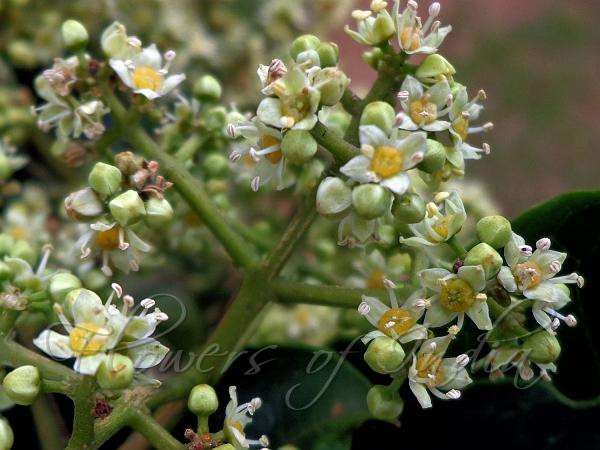|
| Indomalaya Bladdernut |
|

|

|
|
|
|
Photo: |
Botanical name: Staphylea cochinchinensis Family: Staphyleaceae (Bladdernut family)
Synonyms: Turpinia cochinchinensis, Turpinia microcarpa, Turpinia nepalensis
Synonyms: Turpinia cochinchinensis, Turpinia microcarpa, Turpinia nepalensis
Indomalaya Bladdernut is an evergreen tree, up to 18
m tall, with bark thin, brown; blaze yellow. Leaves are imparipinnate,
opposite; stipules interpetiolar, triangular, falling off; axis 3-10.5
cm, stout, swollen at base, hairless; leaflets 3-9, opposite; stipels
lanceshaped-subulate; cauducous; leaflet-stalk 5-28 mm long, slender,
grooved above, opposite; blade 4-15 x 2.5-6 cm, oblong,
elliptic-oblong, ovate or elliptic-ovate, base pointed or narrowed, tip
tapering, margin sawtoothed or rounded toothed-sawtoothed, leathery,
hairless; lateral nerves 4-8 pairs, pinnate, prominent, intercostae
netveined, prominent. Flowers are bisexual, 3-4 mm across, cream
coloured, in at branch-ends or in leaf-axils panicles; flower-stalk
short; sepals 5, 1.5 mm long, ovate, blunt, ciliolulate; petals 5, 3 mm
long, ovate, pointed; stamens 5, inserted outside the disc; filaments
hairless; disc raised, 5-lobed; ovary stalkless, 3-lobed, 3-celled,
ovules 2 or more in each cell. Fruit is a berry, 12-18 mm, spherical,
1-3 lobed, purplish-brown, 3-celled; seeds angular, dark brown; hilum
large. Indomalaya Bladdernut is found in Indomalaysia. It is found in
the Himalayas at altitudes of 1200-2100 m, from Nepal to Bhutan,
NE India.
| Identification credit: S. Jeevith | Photographed in the Nilgiris, Tamil Nadu. |
• Is this flower misidentified? If yes,